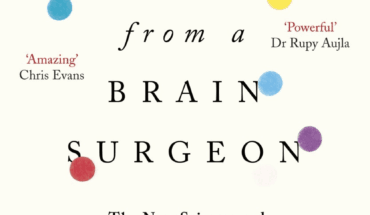Releasing Trauma on Tap – Imagine Your Way to Wellness: Trauma is a deeply distressing experience that can severely impact an individual’s mental, emotional and physical well-being. It occurs when someone witnesses or undergoes a significantly frightening incident that shatters their sense of security.
The immediate effects of trauma vary from person to person. They range from shock and denial to more intense responses such as confusion, fear and even social withdrawal.
Prolonged or unaddressed trauma often leads to various mental health disorders. For example, Post-Traumatic Stress Disorder is a common consequence where individuals continuously relive the traumatic event through nightmares and flashbacks.
Depression, anxiety disorders like Generalised Anxiety Disorder, panic disorder, and phobias are other possible outcomes.
In essence, trauma is far-reaching and can deeply affect one’s mental health if not addressed properly.
However, if you are a victim of trauma, you need to be aware that there are various ways in which you can manage your symptoms and gradually get a hold of your mental health. It’s all about releasing your trauma.
Why it Is Important to Release Trauma
Holding onto trauma can exert significant pressure on your emotional and psychological well-being. It’s like carrying an incredibly heavy load, which over time, becomes unbearable. This suppressed tension impacts daily life operations.
If unexpressed, trauma can trigger harmful reactions. These include anxiety attacks, sleep disorders or even self-destructive behaviour. Bottled-up trauma affects personal relationships, too. It may cause communication difficulties or impair one’s ability to trust others.
Addressing and releasing past trauma paves the way for healing. It allows for reclaiming control over emotions and actions. Consequently, it leads to healthier relationships and a renewed sense of self-worth.
Ultimately, letting go of trauma is the key to living a liberating and fulfilling life.
Methods of Releasing Trauma
Working through and releasing trauma is a complex and individual process. There are different strategies for emotional release and healing, which involve both self-care and professional assistance.
Here are some recognized methods that you should consider using to help you release your trauma.
Psychotherapy
Psychotherapy, or talk therapy, usually serves as the first port of call in handling trauma-related disorders.
Therapy could include something like cognitive-behavioural therapy, where therapists help examine thought patterns that trigger distressing emotions. CBT is especially useful in treating PTSD and anxiety disorders.
Eye Movement Desensitization and Reprocessing
EMDR is a specific form of psychotherapy often used for targeting negative cognitions and treating conditions like PTSD.
During EMDR sessions, therapists guide their clients in making certain eye movements while recalling traumatic memories to lessen the impact of those memories over time.
Exposure Therapy
Exposure therapy is designed to help people confront their fears safely and head-on, in order to gain control over them.
Under supervised conditions, individuals are exposed to the contributing factors of their trauma. The goal here is to diminish the power these catalysts hold over one’s emotions.
This form of therapy is especially constructive for individuals battling phobias stemming from traumatic events.
Medication
Sometimes, medication can assist with managing symptoms related to trauma-induced mental health conditions.
Antidepressants, mood stabilisers, or anti-anxiety medications can potentially lessen distressing symptoms while forming part of a broader treatment plan. These are often employed for those battling depression, anxiety disorders, and PTSD.
But make sure you consult a healthcare professional before beginning any course of medication.
Mindfulness
Mindfulness allows individuals to observe their feelings and thoughts without judgement, promoting emotional release over time.
Techniques such as quiet reflection and deep breathing induce relaxation responses that counter stress responses triggered by trauma.
Mindfulness is particularly effective for managing anxiety disorders.
Yoga
Involving mind-body connection through poses, breathing exercises, and meditation, yoga acts as a direct antidote to the bodily tension resulting from traumatic experiences.
Regular practice may improve symptoms of anxiety, PTSD and depression.
Art Therapy
Art therapy encourages expression using creative mediums like painting or drawing.
This helps communicate feelings that might be challenging to verbalise otherwise. It can assist in trauma-related healing by providing a sense of control.
Maintaining a Positive Mindset and Practising Wellness Visualisation
Fostering a positive mindset can be instrumental in trauma healing.
Affirmations and the power of positive thought often facilitate emotional release by reshaping perceptions around trauma.
Using phrases such as, “I am healing, I am strong,” reinforces resilience and self-efficacy.
Additionally, visualising a wholesome, healthy future can promote wellness.
So, it is possible to imagine your way to wellness.
The Takeaway
Everybody processes experiences in different ways. Therefore, their healing paths will vary accordingly.
So, remember, while the above effective methods hold immense potential for releasing trauma, it is vital that you get professional guidance to help you find the right treatment options for you.
- Gut microbiome could delay onset of type 1 diabetes - 3rd April 2025
- The da Vinci 5 Robot Is Set To Transform Bariatric Care: - 31st March 2025
- Beyond money: the hidden drivers fuelling child food insecurity - 31st March 2025






